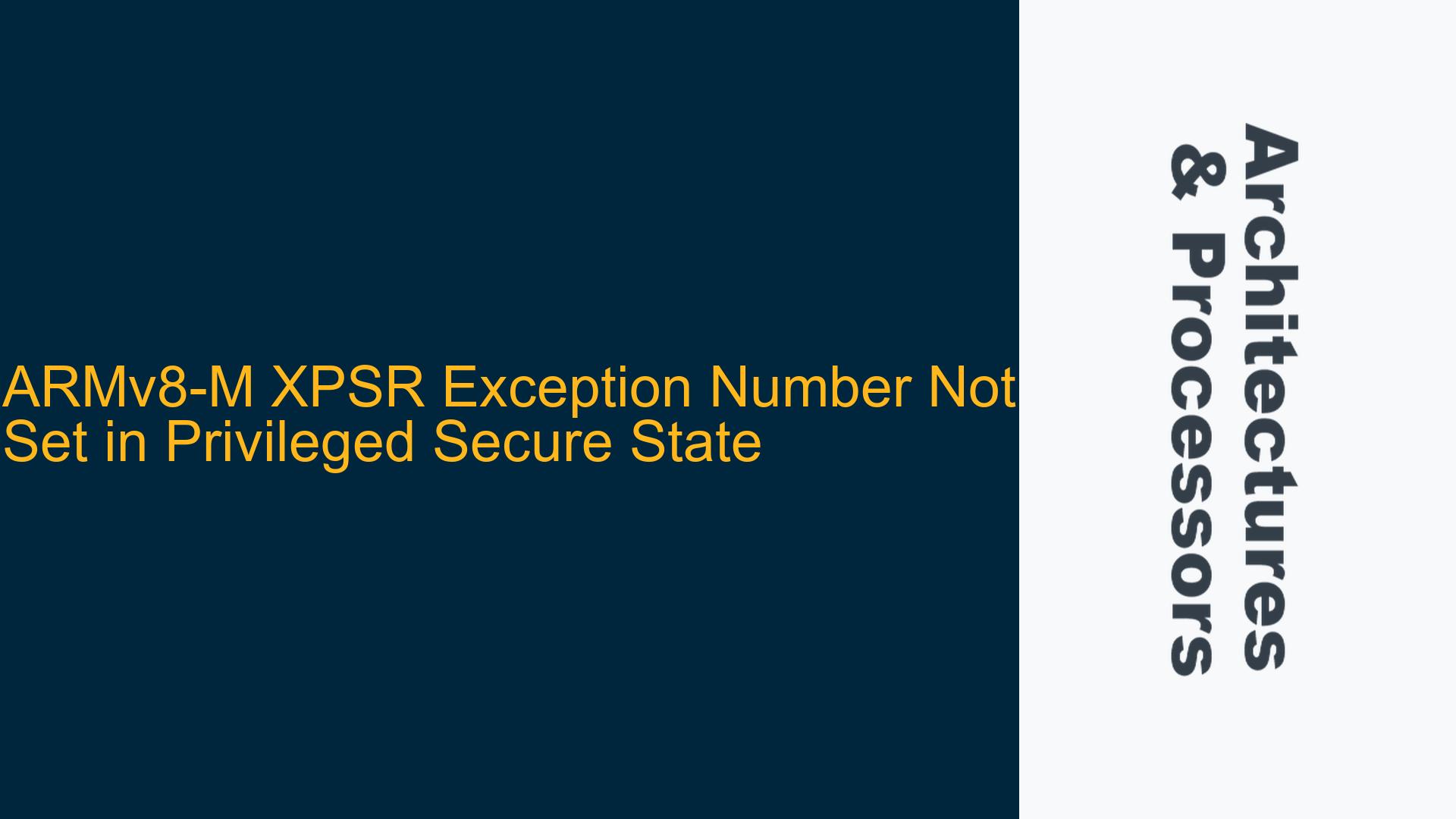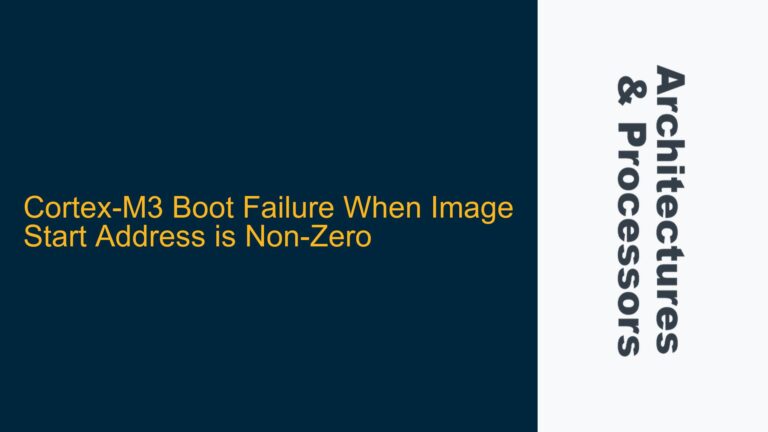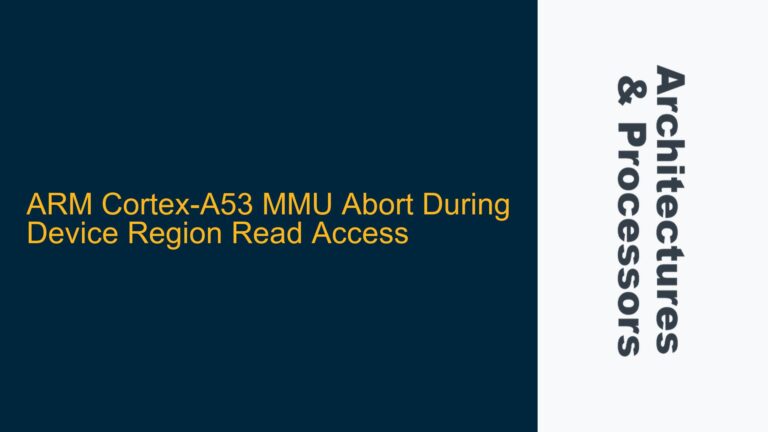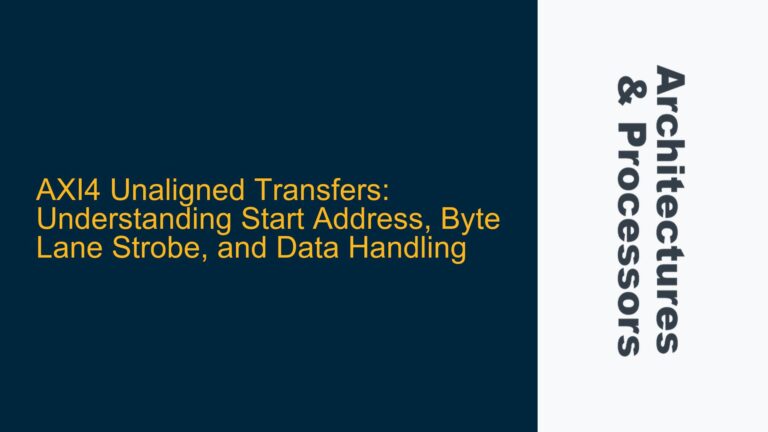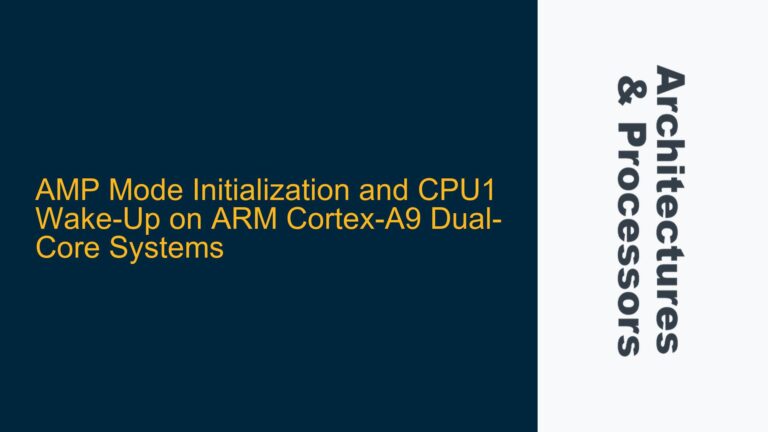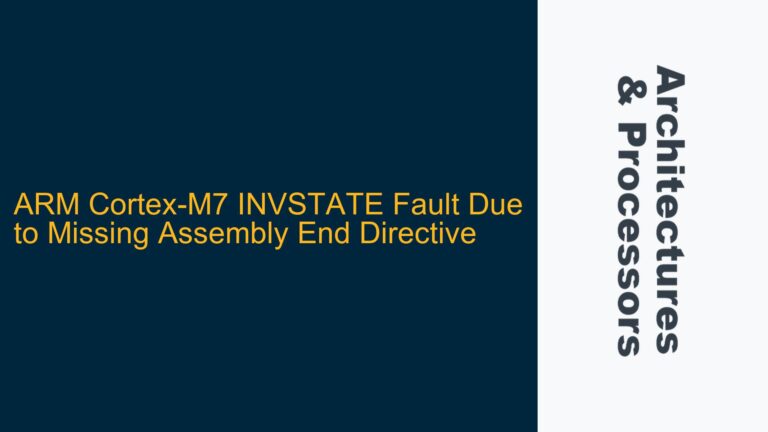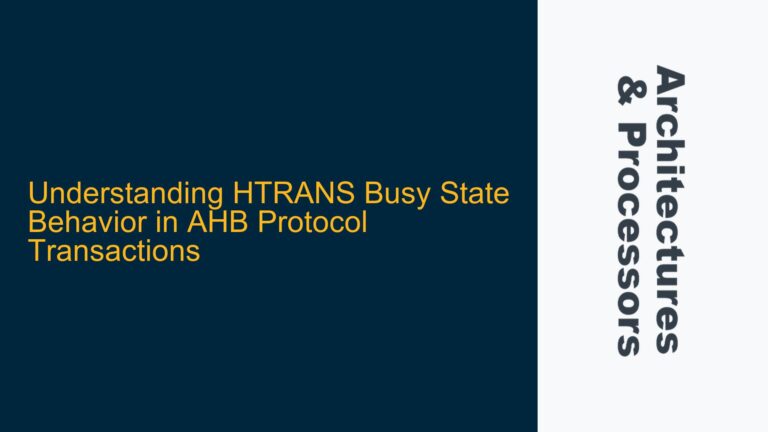ARM Cortex-M33 XPSR Exception Field Update Failure in Privileged Mode
The issue revolves around the inability to manually set the Exception Number field (bits [8:0]) of the Execution Program Status Register (XPSR) in the ARMv8-M architecture when the processor is in Privileged Secure state. The user attempted to set the XPSR register using inline assembly, specifically loading the value 0x21000003 into register r0 and then moving this value to the XPSR register using the MSR instruction. Despite the use of Data Synchronization Barrier (DSB) and Instruction Synchronization Barrier (ISB) instructions to ensure proper execution ordering, the Exception Number field (bits [8:0]) was not updated as expected. Instead, the XPSR register retained the value 0x21000000, indicating that the lower 9 bits were not modified.
This behavior is particularly puzzling because the same operation succeeds when performed through a debugger. The discrepancy suggests a potential issue with the interaction between the processor state, the XPSR register, and the specific instructions used to modify it. Understanding this issue requires a deep dive into the ARMv8-M architecture, the XPSR register’s behavior, and the implications of executing certain instructions in Privileged Secure state.
XPSR Write Protection and Privileged State Constraints
The XPSR register in ARMv8-M is a composite register that includes several fields, including the Exception Number field, which is used to indicate the currently executing exception or interrupt. The ability to modify this field is subject to specific architectural constraints, particularly when the processor is in Privileged Secure state. One possible cause of the observed behavior is that the XPSR register, or specific fields within it, may be write-protected when the processor is in Privileged Secure state. This write protection could be enforced by the Memory Protection Unit (MPU) or other security features of the ARMv8-M architecture.
Another potential cause is the timing and ordering of instructions. Although the user included DSB and ISB instructions to ensure proper execution ordering, there may be additional constraints on when and how the XPSR register can be modified. For example, the processor may require a specific sequence of operations to update the Exception Number field, or there may be restrictions on modifying this field while certain exceptions or interrupts are pending.
Additionally, the difference in behavior between manual modification via assembly code and modification via a debugger suggests that the debugger may be using a different mechanism to update the XPSR register. Debuggers often have privileged access to the processor’s internal state and may bypass certain checks or constraints that apply to normal code execution. This could explain why the debugger is able to set the Exception Number field while the inline assembly code is not.
Ensuring Proper XPSR Modification in Privileged Secure State
To troubleshoot and resolve this issue, several steps can be taken to ensure that the XPSR register is modified correctly in Privileged Secure state. First, it is essential to verify that the processor is indeed in Privileged Secure state when the XPSR modification is attempted. This can be done by checking the CONTROL register and the Secure Fault Status Register (SFSR) to confirm the current processor state and any active security exceptions.
Next, the sequence of instructions used to modify the XPSR register should be carefully reviewed. The MSR instruction is used to move a value from a general-purpose register to a special-purpose register, such as the XPSR. However, the ARMv8-M architecture may impose specific requirements on the value being written to the XPSR register. For example, certain bits in the XPSR register may be reserved or read-only, and attempting to modify these bits could result in undefined behavior.
To ensure that the Exception Number field is updated correctly, the following sequence of operations can be used:
- Load the desired value into a general-purpose register, ensuring that the Exception Number field (bits [8:0]) is set correctly.
- Use the
MSRinstruction to move the value from the general-purpose register to the XPSR register. - Immediately follow the
MSRinstruction with a DSB instruction to ensure that the write to the XPSR register is completed before any subsequent instructions are executed. - Use an ISB instruction to ensure that the processor’s instruction pipeline is flushed and that the updated XPSR value is used for subsequent instructions.
If the above sequence does not result in the expected modification of the XPSR register, it may be necessary to investigate whether the XPSR register is being modified by other parts of the code or by an exception handler. This can be done by setting a breakpoint on the XPSR register and monitoring its value as the code executes.
Additionally, it is important to consider the impact of the Secure state on the ability to modify the XPSR register. The ARMv8-M architecture includes a Security Extension that introduces the concept of Secure and Non-secure states. In Secure state, certain operations may be restricted to prevent unauthorized access to sensitive resources. If the XPSR register is considered a sensitive resource, it may be subject to additional access controls in Secure state.
To determine whether the Secure state is affecting the ability to modify the XPSR register, the following steps can be taken:
- Verify that the processor is in Privileged Secure state by checking the CONTROL register and the SFSR.
- If the processor is in Secure state, attempt to modify the XPSR register in Non-secure state to see if the behavior changes.
- If the XPSR register can be modified in Non-secure state but not in Secure state, this suggests that the Secure state is imposing additional restrictions on the modification of the XPSR register.
In conclusion, the inability to manually set the Exception Number field of the XPSR register in Privileged Secure state is likely due to a combination of write protection, instruction timing, and security constraints. By carefully reviewing the processor state, the sequence of instructions used to modify the XPSR register, and the impact of the Secure state, it is possible to identify and resolve the issue. If the problem persists, further investigation into the specific implementation of the ARMv8-M architecture and any additional constraints imposed by the processor’s security features may be necessary.
